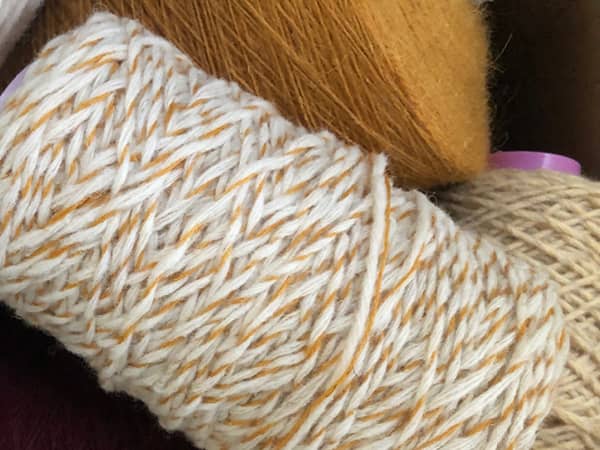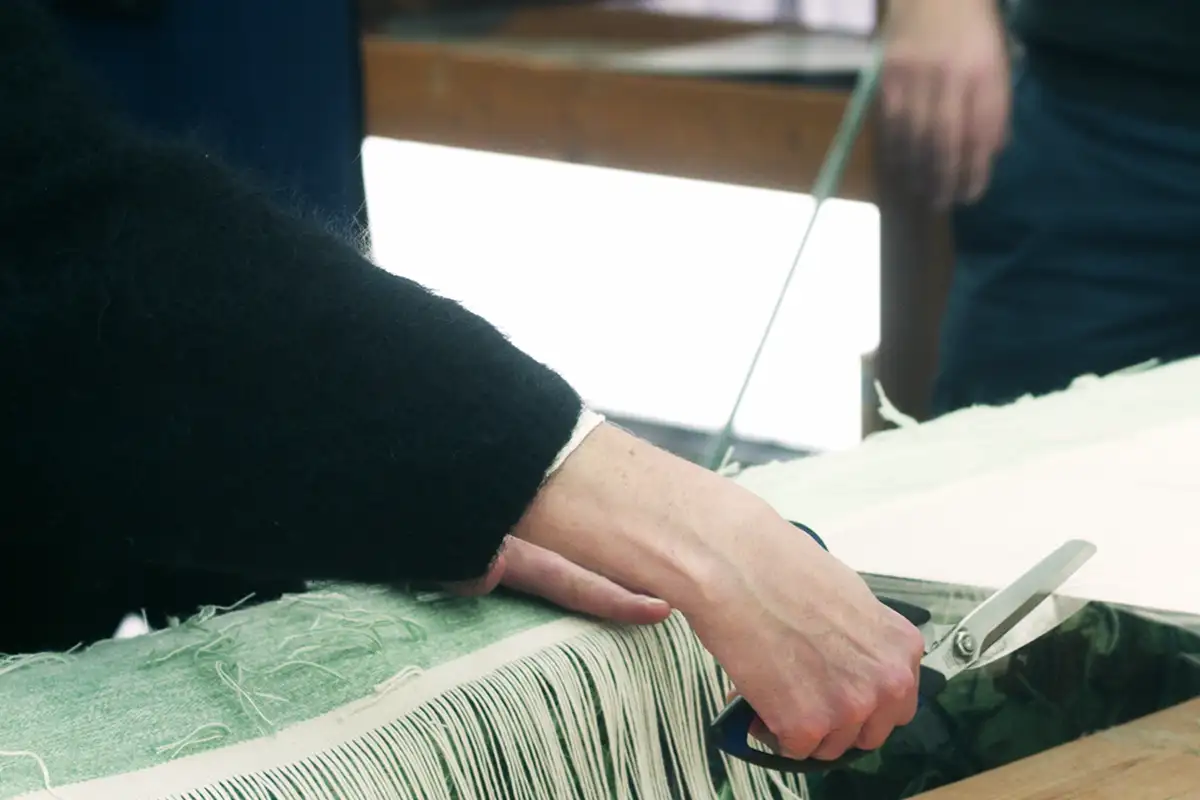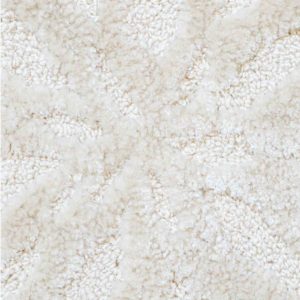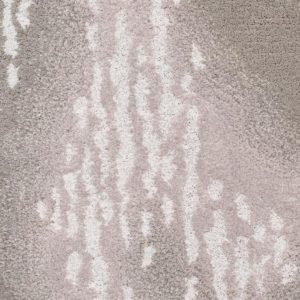ambre #5
1478,00€
by Pinton Studio Lab
ATLAS COLLECTION
MATERIALS Tapestry wool, silk, metallic threads & Italian cotton.
TECHNIQUE Hand-tufted
DIMENSIONS a choice
PRICE ON REQUEST. CONTACT US.Description
cotton
Cotton is made from the vegetal fibres surrounding the seeds of the cotton plant. Traces of cotton were found in Ancient Egypt and in Mexico, possibly over 7,000 years old. Cotton culture developed in America, Africa and Eurasia. While it reached Europe as early as the IInd century BC, its history on that continent truly began with the creation of the West India trading companies. From then on, the culture of cotton never stopped growing and it is now the most used natural fibre in the world. More difficult to weave than linen because of its short fibres, it has a higher density. Cotton is a very good insulation material thanks, in particular, to its exceptional moisture absorption properties. It is warm, soft, comfortable. PINTON weaves this staple of the textile industry on its own or combined with other materials for the Couture as well as the Diffusion lines. In tapestry making, cotton is very rarely used on its own and is most often combined with other materials. It is generally the material used for the warp thread.
Cotton can be used in loop weave where the continuous thread forms loops on the surface of the rug, or in pile weave where the threads on the surface of the rug are cut. It can also be woven as loop and cut which combines both techniques.
wool
Wool is an animal fibre, most often derived from sheep fleece. Wool was already being spun as early as 5,000 BC. In Roman times, wool, leather and linen were the main materials used to make clothes. With the progressive development of mechanical processes and the evolution of breeding techniques, wool became the economic lung of several countries in the Xth century, and again in the XIIth. Renowned for its thermal and sound insulation properties, wool also offers the advantage of absorbing moisture. It is a noble and timeless material, used from time immemorial for its strength and durability. PINTON uses local wool with shorter carded fibres, which make it fluffier and give it more volume, or a specific type of wool from New-Zealand with long combed fibres that are more resistant to heavy traffic. Both types of wool are spun (carded or combed) and dyed in the spinning plant located in Felletin. Whether they are made in 100% pure virgin wool or blended with other materials like linen, silk, bamboo, leather or many others, PINTON wool rugs and carpets bring comfort and quality.
silk
Silk is a natural animal fibre derived from the cocoon spun by the caterpillar of the bombyx mori (worm of the mulberry tree), unsurprisingly called the “silkworm”. Invented in China in the IIIrd millennium before Christ, silk wasn’t produced in Europe, mainly in Italy, before the end of the Middle Ages. And it’s only under the reign of Henri IV that silk production developed in France with the planting of 4 million mulberry trees in the Ardèche, Dauphiné and Cévennes areas. Silk threads are very strong and quality weaving makes silk very resistant. It gives a particular shine to the woven pieces and combines easily with other materials such as wool or bamboo. In its Couture collection PINTON offers 100% silk rugs, incredibly soft. In tapestries silk is most often used in complement of one or more other materials like wool or even cotton.
hand tufted
The hand tufting technique is a process combining centuries-old skills and modern weaving tools. The canvas is perfectly stretched over an upright loom and the craftsperson transfers by hand the future design of the rug with the utmost precision. Threads are inserted manually, one by one, working with a gun on the back of the canvas, following the colours, the drawing and the different tuft heights. PINTON was one of the first manufactories to use the gun tufting technique to produce some of its rugs and carpets and is the only French workshop offering very high quality tufted rugs. With this technique, production times are reduced compared to the knotted stitch weave or point noué. Finally, hand tufting offers a large range of possible depths. Carving is the technique that consists in sculpting the wool and creating textures within the woven rug. Since the early 1990s, PINTON has been specialising in the production of hand tufted rugs for which it also collaborates with famous designers and artists.














